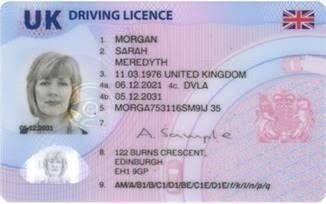Driving License Categories In UK, Obtaining a driving license in the UK involves understanding the various categories of vehicles you are permitted to drive. The UK has a structured licensing system that categorizes vehicles based on their type, size, and purpose. This article provides a detailed guide to the different driving license categories in the UK, helping you determine which license you need for your preferred mode of transport.
Understanding UK Driving License Categories
The UK driving license is divided into multiple categories, each designated by a letter or a combination of letters and numbers. These categories determine what types of vehicles a driver is legally allowed to operate. Below are the primary categories and their specifications:
1. Motorcycle Categories
- AM – Mopeds with a maximum speed of 28mph (45km/h).
- A1 – Light motorcycles up to 125cc with a power output of up to 11kW.
- A2 – Motorcycles up to 35kW power output.
- A – Unrestricted motorcycles, including those above 35kW.
2. Car and Light Vehicle Categories
- B – Standard cars with up to 8 passenger seats and trailers up to 750kg.
- B1 – Light quadricycles and three-wheeled vehicles.
- BE – Cars with a larger trailer exceeding 750kg, provided the total weight does not exceed the permitted limit.
3. Lorry (HGV) and Bus Categories
- C1 – Small lorries between 3.5 and 7.5 tonnes.
- C1E – C1 vehicles with trailers over 750kg.
- C – Large goods vehicles (LGVs) over 3.5 tonnes.
- CE – Large LGVs with trailers over 750kg.
- D1 – Minibuses with 9-16 passenger seats.
- D1E – D1 vehicles with trailers over 750kg.
- D – Full-size buses with more than 16 passenger seats.
- DE – Buses with trailers over 750kg.
4. Special Vehicle Categories
- F – Agricultural tractors.
- G – Road rollers.
- H – Tracked vehicles (e.g., tanks).
- K – Pedestrian-controlled vehicles (e.g., lawnmowers).
- L – Electrically propelled vehicles.
- M – Trolleybuses.
- N – Exempted vehicles (e.g., fire engines, ambulances in emergency service use).
How to Obtain the Right License Category
To obtain a license for a specific category, you must meet the age requirements and pass the necessary tests, including theory, practical, and in some cases, medical examinations. For example:
- A category B license requires passing a theory test and a practical driving test.
- An HGV (Category C) license requires additional training and a Driver Certificate of Professional Competence (CPC).
Conclusion
Understanding the different driving license categories in the UK is crucial for ensuring that you operate the right type of vehicle legally. Whether you are a learner driver or a professional seeking an HGV or bus license, knowing the requirements can help you navigate the process more effectively. Always check the latest DVLA regulations to stay compliant with the UK driving laws.





